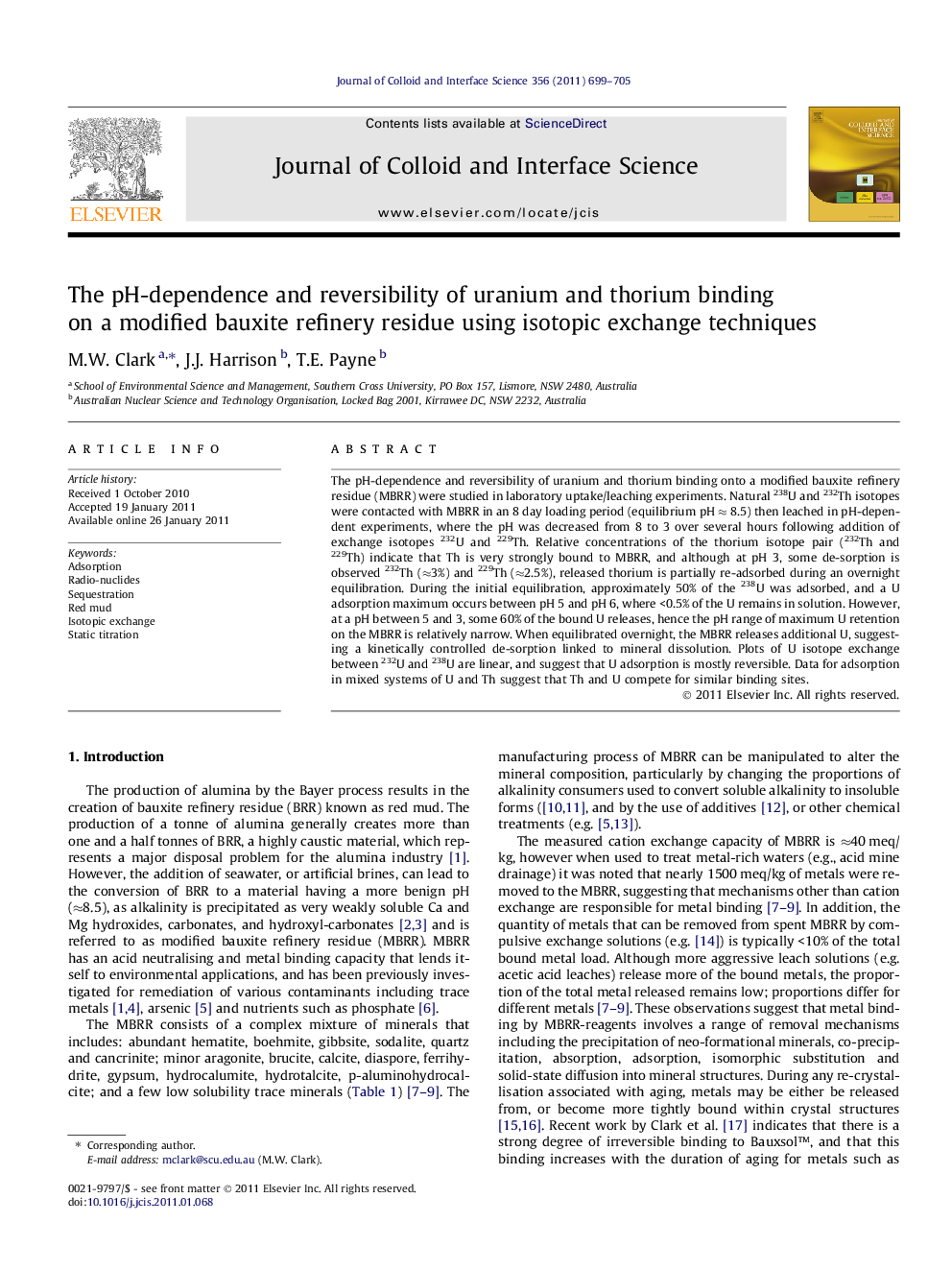| کد مقاله | کد نشریه | سال انتشار | مقاله انگلیسی | نسخه تمام متن |
|---|---|---|---|---|
| 608824 | 880609 | 2011 | 7 صفحه PDF | دانلود رایگان |

The pH-dependence and reversibility of uranium and thorium binding onto a modified bauxite refinery residue (MBRR) were studied in laboratory uptake/leaching experiments. Natural 238U and 232Th isotopes were contacted with MBRR in an 8 day loading period (equilibrium pH ≈ 8.5) then leached in pH-dependent experiments, where the pH was decreased from 8 to 3 over several hours following addition of exchange isotopes 232U and 229Th. Relative concentrations of the thorium isotope pair (232Th and 229Th) indicate that Th is very strongly bound to MBRR, and although at pH 3, some de-sorption is observed 232Th (≈3%) and 229Th (≈2.5%), released thorium is partially re-adsorbed during an overnight equilibration. During the initial equilibration, approximately 50% of the 238U was adsorbed, and a U adsorption maximum occurs between pH 5 and pH 6, where <0.5% of the U remains in solution. However, at a pH between 5 and 3, some 60% of the bound U releases, hence the pH range of maximum U retention on the MBRR is relatively narrow. When equilibrated overnight, the MBRR releases additional U, suggesting a kinetically controlled de-sorption linked to mineral dissolution. Plots of U isotope exchange between 232U and 238U are linear, and suggest that U adsorption is mostly reversible. Data for adsorption in mixed systems of U and Th suggest that Th and U compete for similar binding sites.
The figure shows that the proportions of initially sorbed 238U against the exchange isotope 232U (as UVI) are linear over the sample pHs investigated. However, up to 16% of the 238U is irreversibly bound to the solids during the initial loading. Moreover the higher the initial loading the greater bound. This increase is because of the development of higher concentration gradients and increased intra-particle diffusion. In mixed 238U and 232Th loadings, 232Th appears to reduce the irreversible binding of 238U most likely through competition for binding sites.Figure optionsDownload high-quality image (103 K)Download as PowerPoint slideResearch highlights
► Thorium binding to MBRR’s is irreversible over pH range 3–8.
► Uranium binding is largely reversible, but up to 16% is irreversibly bound.
► U binding is restricted over a narrow pH range, pH 6–7.
► U and Th compete for similar sites as mixed U/Th sample reduces irreversibility.
► Irreversible U binding likely from intra-particle diffusion.
Journal: Journal of Colloid and Interface Science - Volume 356, Issue 2, 15 April 2011, Pages 699–705